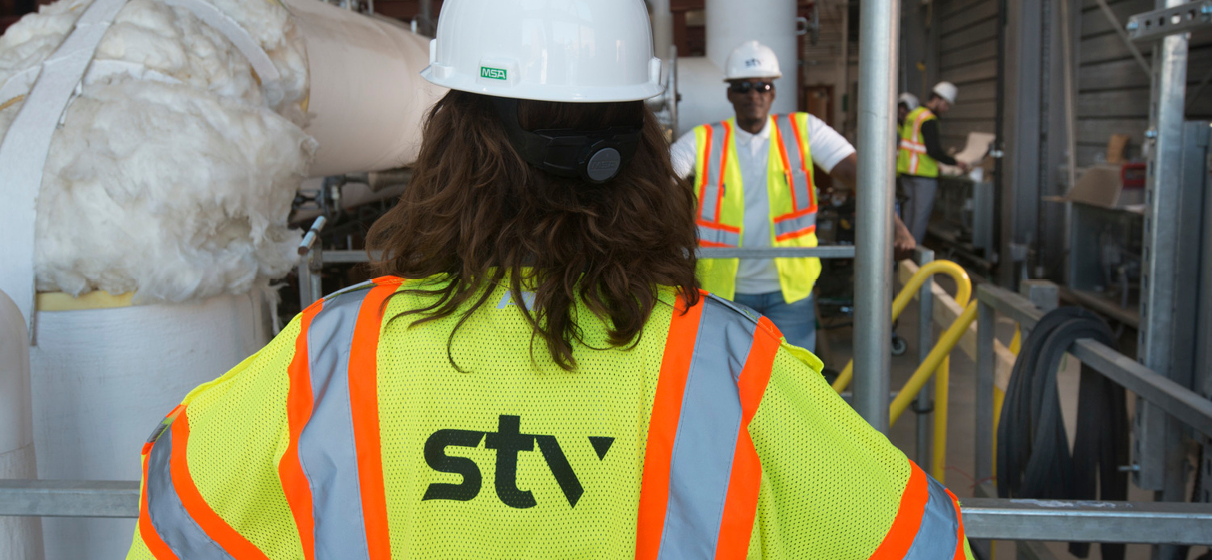The construction industry relies on seamless collaboration across all stakeholders – from designers and construction managers to clients and contractors – for effective project delivery. Yet, this collaboration often faces challenges due to communication barriers, siloed processes, and reliance on outdated practices.
During a recent a presentation at the Construction Managers Association of America’s 2024 Annual Conference, our STV team spoke about how by fostering early collaboration, embracing face-to-face interaction and integrating advanced digital tools like AI, project teams can achieve significantly better outcomes for owners and communities alike.
At STV, our program management and construction management (PM/CM) team has found that one of the fundamental steps toward successful project delivery is establishing open communication channels from the very beginning. Projects benefit when designers, construction and program managers and owners collaborate from the planning phase, rather than working independently until issues arise. This proactive communication prevents costly change orders, delays, and conflicts that commonly surface due to misunderstandings or misaligned expectations.
The construction industry can often appear fragmented, with stakeholders relying on diverse tools and processes. Designers, architects, PM/CM teams and commissioning agents frequently use their own software, creating data silos that can disrupt communication and lead to misalignment. A Common Data Environment (CDE) solves this issue by centralizing project information, allowing everyone involved to access up-to-date data in real time.
A CDE acts as a structured digital repository for project documents, schedules, and financial data, facilitating collaboration across project phases. When all team members work from a “single source of truth,” they’re less likely to encounter conflicting information or outdated data, thus reducing errors and the need for rework. A centralized CDE also facilitates AI integration, enhancing project management capabilities through predictive analytics, clash detection and other advanced tools.
Artificial intelligence has tremendous potential to transform project management in the AEC industry. By automating routine tasks, identifying potential risks, and enabling predictive insights, AI can help project teams make more informed decisions.
For example, AI-powered document review tools can analyze thousands of documents quickly and highlight inconsistencies, minimizing the risk of overlooking critical details. An AI-driven RFI (Request for Information) generator can streamline the process of identifying and addressing gaps in project specifications before they become costly issues. Furthermore, AI platforms integrated with BIM (Building Information Modeling) allow for 3D model sharing and clash detection, which improve the accuracy of construction plans and reduce potential conflicts.
However, even with these tools, the success of a project largely depends on involving Owners’ Project Managers (OPMs) and CMs in the planning phase. By participating early on, OPMs and CMs can align project objectives, streamline risk assessments and address commissioning requirements. For example, commissioning – a crucial step in ensuring that building systems function as intended – should begin during the planning phase to establish clear standards and expectations. This approach avoids misunderstandings and facilitates smoother system start-up and validation.
Early involvement of OPMs and CMs also allows stakeholders to collectively address common challenges, like coordinating budgets, timelines and resource allocations. The result is a unified strategy that helps meet project goals and optimizes resource use, ultimately enhancing project value for the client.
Miscommunication during the planning phase can lead to significant project delays, budget overruns and unmet client expectations. Without clear communication among stakeholders, project goals may become unclear, resulting in misaligned priorities. Likewise, when designers and contractors lack collaboration, timelines can become unrealistic and risk assessments may miss critical issues, leading to future delays.
The construction phase shouldn’t be viewed as the endpoint for project collaboration. Designers and architects remain involved throughout construction to address emerging challenges, approve submittals, and manage change orders. By maintaining a CDE that documents real-time progress, tracks changes and organizes issue resolution, project teams create an organized record that streamlines the handover process.
An effective closeout phase depends on efficient documentation management and thorough knowledge transfer to the client’s facilities management team. The CDE enables project teams to organize final deliverables, such as as-built drawings, warranties, and operation manuals, in one place, minimizing the risk of document loss. Moreover, a well-structured CDE supports compliance, preserves an audit trail and provides training resources that simplify operations for the client.
Ultimately, the integration of AI and digital tools in project management holds transformative potential, but technology alone isn’t a cure-all. Effective project management requires a blend of advanced digital solutions, early collaboration and human expertise. By establishing clear data governance and a common data environment, project teams create a foundation that enables AI to enhance decision-making with actionable insights.










